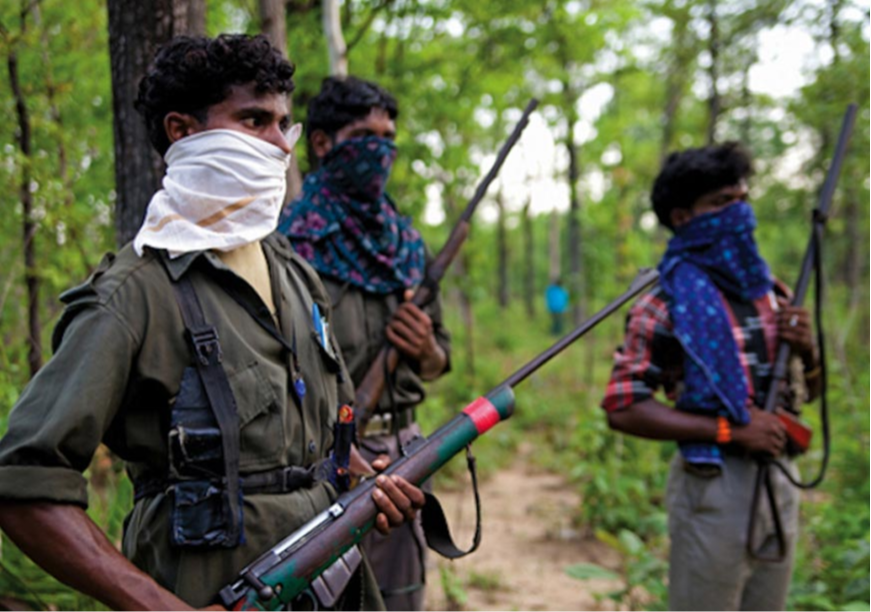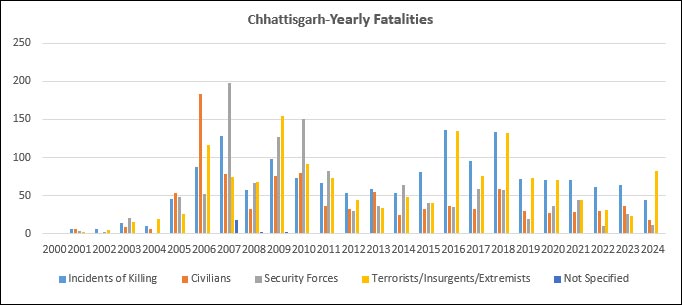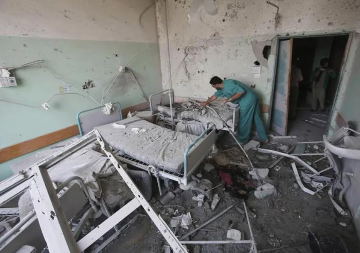
On 16 April, security forces neutralised 29 alleged Maoists in the forests of Kanker district (Bastar division) in Chhattisgarh. The Kanker joint operation led by the Border Security Force and District Reserve Guard (DRG) of Kanker has become billed as the most successful security operation since the formation of Chhattisgarh in 2000. Out of 29 casualties, two of the top Maoists, Lalita and Shankar belonging to Bastar divisional committee, were neutralised by the security forces. It is also speculated that the entire Partapur Area Committee of CPI-Maoist has been eliminated in the encounter.
A fortnight later (30 April), a team of DRG and Special Task Force launched another successful encounter eliminating 10 more Maoists near the borders of Narayanpur and Kanker districts. Among the slain Maoists, there were two prominent divisional committee members. It may be recalled that in another successful joint operation on 3 April, DRG, Special Task Force, the elite CoBRA unit and the Central Reserve Police Force (CRPF) neutralised as many as 13 alleged Maoists in Bijapur, Chhattisgarh. A week before (27 March), a joint security operation involving DRG, CRPF and CoBRA unit neutralised 6 insurgents near Chipurbhatti area of Bijapur. Thus, in 2024 itself (January-April), the once dreaded CPI-Maoist organisation has suffered massive blows in the hands of security forces.
A week before (27 March), a joint security operation involving DRG, CRPF and CoBRA unit neutralised 6 insurgents near Chipurbhatti area of Bijapur.
In the span of four months, a record 91 Maoists including some of the top commandoes have been killed by the Chhattisgarh state. Compare this figure with 2023. In the entire year, only 23 casualties incurred among the Maoists. In short, there is every indication that 2024 will surpass the records of past years as far as the security forces’ domination over CPI-Maoist is concerned. Thus, can we say that Chhattisgarh has turned the corner on Maoists? Has the state gained the upper hand over Maoists, which may remain irreversible?
At last Chhattisgarh has an upper hand
While the violent incidents related to left-wing extremism have come down to manageable levels in most of the affected states (see figure) in the last decade, Chhattisgarh still remains one of the key bastions of the CPI-Maoists. Not long ago, as many as 18 (out of a total of 27) districts of the state were under the influence of extremist organisations. Dantewada, Bijapur, Narayanpur, Bastar and Kanker among others remain some of the most affected districts as far as Maoist insurgency is concerned. It may be recalled that not too long ago, Maoists launched some major attacks, particularly the massacre of 76 CRPF soldiers in 2010 and the killing of the entire top leadership of the Congress Party in Chhattisgarh in 2013.
However, after years of dithering and policy ambivalence, particularly over the controversial Salwa Judam (local vigilante initiative), the state leadership in recent years has shown major determination while fighting the Maoists and checkmating their spatial spread and growing influence. To begin with, the state government has gone for a massive scaling up of its police force and followed the Andhra Greyhound model to create its new battalion of Special Forces (popularly called CoBRA unit). Importantly, successive governments in Chhattisgarh have shown a common purpose to tackle the menace of Maoism by investing in crucial human development indicators (notable example is the public distribution scheme to enhance food security among tribal populations).
The enhanced combat capability of the local police through police modernisation (Bastariya Battalion), fortified police stations, and improved coordination between the Centre and state, including intelligence and paramilitary support, is beginning to pay off.
However, the game changer in the counterinsurgency strategy has been the special emphasis on improving road connectivity. The state has successfully executed 11 key road projects in the crucial Sukma, Bijapur and Jagdalpur districts. In 2021, the state government with active support from the Centre, constructed the critical Palli-Barsur axis road, which has facilitated movement of security forces to inaccessible areas in Bodli and Kedameta. The enhanced combat capability of the local police through police modernisation (Bastariya Battalion), fortified police stations, and improved coordination between the Centre and state, including intelligence and paramilitary support, is beginning to pay off.
Further, the improved road connectivity has enabled the state to open more security camps in the interior areas once considered to be Maoist strongholds. For instance, between December 2023 and April 2024, the CRPF has opened 20 new camps in the Sukma-Bijapur region, whereas the Border Security Force (BSF) has opened three new camps in Kanker district. Notably, in February, the security forces have able to set up a police camp in Puvarti village (Sukma district), a stronghold of dreaded Maoist commander Hidma. Such has been the confidence of the security forces that they have taken the battle into Abujhmad (considered a major safe haven for Maoists) by establishing new police camps on the two main entry points of Kanker and Narayanpur. In recent weeks, central forces have successfully crossed the Kotri river to establish a new base camp in Abujhmad. Officials claim that it is the new camp that facilitated the execution of the recent encounter at Kanker.
A combination of an attractive rehabilitation policy, Maoism’s loss of ideological attraction, and mounting pressure generated through security operations have led to the surrender of more than 800 Maoists since 2020.
In short, a slew of security and developmental measures along with the overall decline of the CPI-Maoist organisation nationally has given Chhattisgarh state an upper hand over the rebels. The proof lies in the numbers. For example, between 2018 and 2024 (up to 06 May), as many as 465 Maoists have succumbed due to increased security measures. In the same period, about 206 security forces have lost their lives while taking on the rebels. While the fatalities ratio is heavily in favour of the security forces, what is significant is the drastic reduction in violent incidents and, more importantly, civilian casualties in the same period (See graph 1). What is even more noteworthy is that under pressure, there is a growing trend of surrender from the Maoist cadres. Recently, as many as 35 Maoists surrendered before the Dantewada police. A combination of an attractive rehabilitation policy, Maoism’s loss of ideological attraction, and mounting pressure generated through security operations have led to the surrender of more than 800 Maoists since 2020.
Chart-1: Chhattisgarh LWE related Fatalities (up to April 30, 2024)

Source: Collated from South Asia Terrorism Portal and Ministry of Home Affairs (MHA)
Too early to declare victory?
As seen from the above discussions, Chhattisgarh state has made significant inroads against the Maoists. Having inflicted heavy casualties on the rebels, as clearly demonstrated from the recent security operations and growing confidence in setting up security camps next to Abujhmad, it would prompt many to declare victory over the CPI-Maoists. However, it would be prudent for the state leadership and the security establishment overseeing crucial counterinsurgency operations to remain cautious and not fall prey to false bravado. Despite ceding control over major districts and losing many fighters to the security forces, the Maoists still remain a strong force in Abujhmad and key districts of Narayanpur, Bijapur, Bastar and Dantewada. Moreover, as per the latest categorisation of districts affected by Maoist activities, as many as 15 districts from 58 are from Chhattisgarh alone. The hilly and forested region of Bastar is heavily mined (with landmines) making it extremely difficult for security forces to move freely and launch combing operations. Further, as past incidents have proven, the CPI-Maoists still retain the capability to launch daring attacks on security forces. Not so long ago, (26 April 2023), the Maoists conducted a major ambush leading to the deaths of 10 DRG personnel in Dantewada. The insurgents launched such a daring attack despite significant improvement in road connectivity and security preparedness.
Having inflicted heavy casualties on the rebels, as clearly demonstrated from the recent security operations and growing confidence in setting up security camps next to Abujhmad, it would prompt many to declare victory over the CPI-Maoists.
However, as indicated in this article, the series of operations by security forces in imposing massive casualties for the Maoists indicate that his incident will unlikely be repeated. This is largely because of the security forces’ recent success in setting up police camps in Maoist strongholds including areas close to Abujhmad.Yet, lessons from counterinsurgency success stories indicate that the state and its security forces have to stay where they are for the long haul, while opening a line for peace dialogue with the rebels at the same time. Mere elimination of Maoist fighters will not end the more than 50 years of protracted insurgency.
Niranjan Sahoo is a Senior Fellow at the Observer Research Foundation
The views expressed above belong to the author(s). ORF research and analyses now available on Telegram! Click here to access our curated content — blogs, longforms and interviews.





 PREV
PREV


